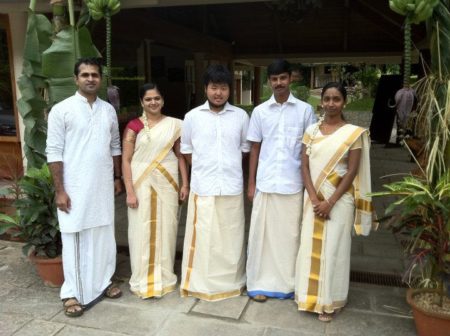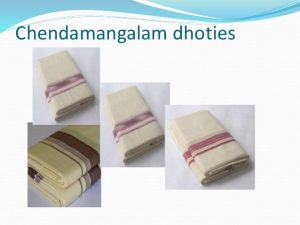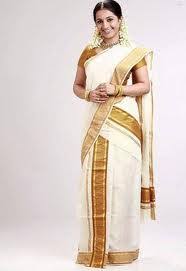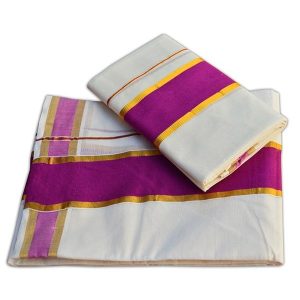Are you looking for Traditional Kerala Attire? then to check out this post. The numerous states of India all have their unique costumes and food choices but Kerala is one state which is almost equated with those beautiful and pristine white sarees and dhotis that are the center of attraction in every gathering.
Traditional Kerala Attire
We might have often wondered where to get those lovely sarees that are so perfect for all festive occasions- from puja ceremonies to weddings. Today we delve deeper into the world of Kerala handloom to discover the true origins of their traditional attire.
Chendamangalam Dhotis:
Chendamangalam, or Chennamangalam, is a small town in the Ernakulam district of Kerala which is renowned worldwide for the beautiful and traditional handloom work it produces.
The traditional cotton yarn is used for weaving these dhotis and they are often found to be embroidered with Kasa Vu, or breathtakingly beautiful golden zari. The specialty of the cloth lies in the fact that it is made up of warp threads- which are made fine and round so that the resulting dhotis do not have any kind of protrusions or uneven blemishes on the surface.
The two most easily distinguishable features of the Chendamanagalam dhotis are:
1. The basic density or thickness of the fabric is much higher than other cotton dhotis of similar type.
2. The golden zari design occurs on both the cross border and side-border of the dhoti.
Settu Mundu Sarees:
The sarees are also known as Mundum Neriyathum sarees where Mundu is the lower garment of the attire and the Neriyathum represents the upper portion of the garment. Made out of beautiful white or cream-colored cotton fabric, the saree is bordered with golden Kasa Vu or zari as in the Chendamangalam dhotis.
It is a traditional costume of the Malayali women, and consist of two parts. The Mundu in wrapped around like a saree around the lower part, while the upper fabric or Neriyathum is tucked into the petticoat on one side, and then draped around the shoulder.
In modern times, the cloth has been compiled into one whole saree as worn across other parts of India, for the convenience of women. However, in traditional festivals, the old way of wearing the sari can also be observed at times. The sari has now become immensely popular even in North India and almost all states have genuine manufacturers of the costume.
No matter however much we are attracted to the western costumes, nothing can quite emulate the serene beauty of these traditional attires that are still integral to our rich heritage and culture passed down from generations.







